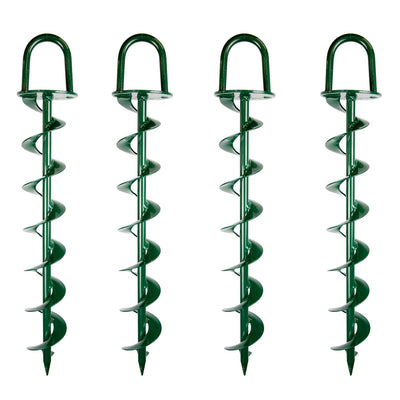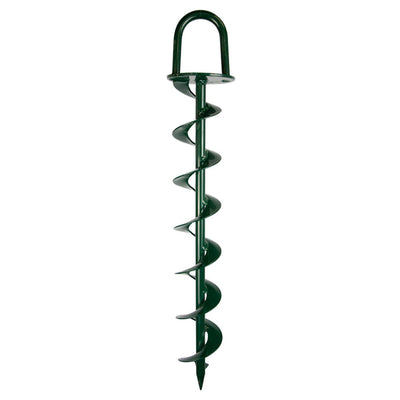The Role of a Ground Anchor in Ensuring Property Protection
The Role of a Ground Anchor in Ensuring Property Protection
Blog Article
Discover the Different Kinds Of Ground Anchor for Your Following Project
When embarking on a building and construction or landscape design job, comprehending the numerous kinds of ground supports offered is vital to making certain both stability and longevity (Ground Anchor). From auger supports, which stand out in diverse dirt problems, to stake anchors created for short-lived installments, the choices are various. Additionally, concrete and screw anchors present unique benefits in details circumstances, while deadman supports are tailored for applications requiring resistance to side pressures. The selection of a suitable anchor type can significantly affect the overall success of your task, motivating further exploration into their respective advantages and applications.

Auger Anchors
Auger supports are a preferred choice in various building and landscape design tasks due to their one-of-a-kind style and efficient anchoring capacities. These anchors are composed of a helical screw-like shaft that is driven right into the ground, allowing for a stable and secure hold. The spiral style promotes very easy installment and makes the most of resistance versus side pressures, making auger supports particularly reliable in applications such as fence, short-lived structures, and erosion control.
The installment process of auger supports is fairly straightforward. They can be manually or mechanically set up, relying on the size and needed depth. This versatility enables for their usage in varied dirt problems, from sandy to clayey terrains. In addition, auger anchors can be quickly removed and reused, which includes in their cost-effectiveness and sustainability.
Among the considerable benefits of auger anchors is their ability to distribute tons uniformly across the surrounding soil, minimizing the threat of dirt disturbance and lessening environmental influence. In addition, they are less prone to heaving or loosening up gradually contrasted to conventional anchoring approaches. Consequently, auger supports are an excellent option for projects needing durable and trusted anchoring remedies.

Risk Anchors
When it pertains to protecting frameworks in a selection of outdoor applications, stake anchors provide a simple and reliable option. These supports are normally created from durable materials such as steel or light weight aluminum, designed to stand up to environmental anxieties while offering optimum security. Their straightforward style permits fast installment, making them an optimal selection for momentary or long-term anchoring demands.
Stake supports are especially valuable in securing tents, canopies, and other light-weight frameworks versus wind and weather condition. They operate by being driven into the ground at an angle, producing a strong hold that stands up to pull-out forces - Ground Anchor. The effectiveness of risk supports relies on numerous factors, consisting of dirt type, moisture web content, and the angle of installment
For added safety, several risk anchors include accessory factors for bands or ropes, allowing for stress changes as required. In applications such as landscaping or construction, they can properly maintain tools or structures on uneven surface. Overall, stake supports give a functional and affordable solution for securing numerous outside setups, making them a recommended option for contractors and DIY lovers alike.
Concrete Anchors
Concrete anchors give a robust solution for safeguarding structures to concrete surface areas, guaranteeing security and safety and security in different applications. These supports are vital for projects ranging from household constructions to large-scale commercial installments. They come in different kinds, including development anchors, sticky anchors, and undercut supports, each developed for specific load needs and ecological conditions.
Sticky anchors use high-strength epoxy or resin to bond the anchor to the concrete, providing exceptional load-bearing capabilities, particularly in split concrete scenarios. Undercut anchors develop an useful reference unique shape within the concrete, giving outstanding holding power, specifically in applications where tensile tons are widespread.
Selecting the ideal concrete support entails thinking about elements such as the weight of the lots, the problem of the concrete, and ecological conditions. Correct installment strategies are vital to make sure optimum performance and reliability. When carried out appropriately, concrete supports considerably improve the architectural honesty of various jobs, making them essential in contemporary building practices. Understanding the details demands of your task will certainly help in selecting the right kind of concrete anchor for the task.
Screw Anchors

Screw supports are a flexible attaching option that can be effectively utilized in a range of applications where typical concrete anchors may not suffice. These anchors contain a helical design that allows them to be conveniently driven right into the ground, making them perfect for usage in dirt and other substrates. Their distinct framework offers superb holding power and resistance to pull-out pressures, making them ideal for many projects, from landscaping to architectural support.
Among the primary advantages of screw anchors is their ease of installment. They require very little equipment and can frequently be installed without the requirement for excavation, which saves both time and labor prices. In addition, screw anchors can be eliminated and recycled, providing a sustainable solution for temporary applications.
Screw anchors are especially useful in areas where dirt conditions are testing, such as loosened or sandy soils. Their ability to be mounted at differing depths permits for customization based upon specific task needs. In general, screw anchors supply a trusted and reliable securing technique, making them a superb choice for designers and specialists seeking reliable options for their projects.
Deadman Anchors
Deadman supports act as a durable service for supporting structures in challenging conditions, particularly where conventional anchoring approaches might fail. These supports are composed of large, heavy things hidden underground, which develop resistance versus side pressures. The design usually entails a horizontal part, such as a block of concrete or a metal plate, buried in the soil, to which bands or wires are connected.
The efficiency of deadman supports depends on their ability to distribute loads over a larger area, decreasing the threat of failing in unstable dirt conditions. They are especially advantageous in applications such as preserving wall surfaces, momentary structures, and incline stabilization, where dirt motion can jeopardize the integrity of the structure.
Setup of deadman supports needs mindful planning to guarantee they are positioned at the right depth and orientation, optimizing their load-bearing capacity. While they may call for more labor and product than lightweight anchors, their dependability in unfavorable conditions makes them vital for lasting projects. Deadman supports are versatile and can be adjusted to various applications, making them a go-to selection for engineers encountering special obstacles in their jobs.
Final Thought
In recap, selecting the ideal kind of ground anchor is important for making certain stability and protection in numerous tasks. Auger anchors master go to this site diverse soil conditions, while stake anchors fit short-lived applications. For concrete surfaces, expansion and adhesive supports give trusted alternatives, and screw anchors supply flexibility in challenging surfaces. Deadman anchors are specifically efficient in resisting lateral forces for maintaining walls. Mindful factor to consider of these options will certainly improve task results and architectural stability.
Additionally, concrete and screw supports present one-of-a-kind advantages in specific situations, while deadman supports are customized for applications calling for resistance to side forces - Ground Anchor.Auger anchors are a prominent option in various building and landscape design tasks due to their one-of-a-kind design and efficient anchoring abilities. They come in various kinds, consisting of expansion supports, sticky supports, and undercut anchors, each created for particular tons requirements and environmental problems
Glue anchors make use of high-strength epoxy or resin to bond the support to the concrete, using premium load-bearing capabilities, specifically in broken concrete scenarios. On the see this whole, screw supports offer a effective and trustworthy anchoring technique, making them an excellent selection for contractors and designers seeking reliable services for their jobs.
Report this page